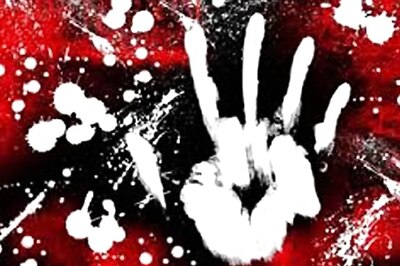
views
It is close to a month since Sonia Gandhi took over the reins of the Congress for the second time when the party was facing its worst-ever crisis. The Congress Working Committee zeroed in on Sonia Gandhi last month after looking at various options, hoping that she could bring the party back on track.
No doubt, Rahul Gandhi’s sudden resignation had plunged the party into a serious leadership crisis and it will be a stupendous task to restore its health. Sonia Gandhi had taken over in challenging circumstances in 1998 but with the Congress having lost two successive Lok Sabha polls, she faces an even tougher task despite the fact that she commands respect, trust, and loyalty of the party across the generational divide. It is now to be seen if the party revives soon as the Sonia Gandhi of 2019 is not the Sonia Gandhi of 1998.
The key issues that are accelerating the slide of the Congress are the multiple power centres of the Gandhis, the fight between the old guard and younger leaders, disconnect with the voters, lack of dynamism, leadership crisis, confused political agenda and lack of trust in the leadership. To tackle these, the Congress needs a vote catcher but the Gandhis have lost their magic.
Significantly, in her first meeting with the party’s top brass on Thursday, Sonia Gandhi tried to address these very problems facing the party. First, she spelt out her strategy, which includes launching a massive mass contact drive to connect with voters. It is time the party realises that the Congress has lost connect with the people, which has led to loss in polls. It has also lost its traditional vote banks like the Dalits and the Brahmins.
Second, Sonia Gandhi plans to launch a membership drive. This is necessary because the Congress has only two crore members, while the BJP has crossed 14 crore. This, however, should be accompanied by checking the erosion in the party.
Third, she also has plans to set up training modules that will educate the youth on ‘true nationalism and secularism.’ Sonia Gandhi could also activate the defunct party constituents like the Seva Dal and Youth Congress, which can be the foot soldiers to carry across the message of the Congress.
The fourth step involves taking an aggressive stand. For this, she has directed party workers to hit the streets from next month to expose the failures of the Narendra Modi government. “We must stand up fearlessly to fight on the streets, fight in villages, towns and cities. We must have a concrete agitational agenda on issues of pressing concern, whether they are economic or social," she said.
Fifth, she also held a stock-taking meeting with Congress chief ministers on the implementation of poll promises and has advised for better government-party coordination. Last but not least, she has advised the party to remain united — though it will take all her skills to keep the flock together.
All these are crucial moves but the problem lies in the implementation. Most of these ideas have been talked about for long. The party needs to be revitalised but there is no cohesion.
This is where the mistrust between the old guard and the younger leaders comes to the fore. One of the biggest challenges facing Sonia Gandhi is this discord between the two sets, which is complex because neither side is happy with the status quo. The old guard naturally wants to consolidate its position and therefore, is not keen to facilitate a transition. They are happy — unlike Rahul Gandhi loyalists — that Sonia Gandhi is back again.
Many had expected that after Sonia Gandhi’s return, the Congress would put up a more cohesive, united face. The party’s prominent young faces such as Jyotiraditya Scindia, Sachin Pilot, and Milind Deora feel that the old guard is blocking their chances. They are emboldened to talk against the party line on issues such as Article 370. Interestingly, the old guard feels that Rahul Gandhi is still exercising influence, albeit from behind the scenes. The same Sam Pitroda, Sachin Rao and Praveen Chakravarti continue to be the strategists, according to the old guard. Even senior leaders like Jairam Ramesh, Shashi Tharoor and Abhishek Manu Singhvi have questioned the party’s strategy, pointing out that “demonising” PM Modi does not work.
The infighting is worse in the three poll-bound states of Maharashtra, Jharkhand and Haryana. Sonia Gandhi has to play the role of the peacemaker in keeping the warring state units together and avoid a split in faction-ridden Haryana, Madhya Pradesh and Delhi. For all purposes, the Congress is resigned to the BJP walking away with all three states. Sonia Gandhi is also resigned to the erosion in the state units.
What is required is clarity on what the Congress stands for today. The party should have a brainstorming session to thrash out the matters and decide its line on all issues. In fact, the Pachmarhi and Shimla conclaves helped clear the party stand on many issues earlier. Sonia Gandhi has the unenviable task of reinventing and reviving the party. Though the blame goes to the Gandhis for not paying attention to the Congress’s health in the past two decades and more, the grand old party is too big to disappear in a day.
(The author is a political analyst. Views are personal)


















Comments
0 comment